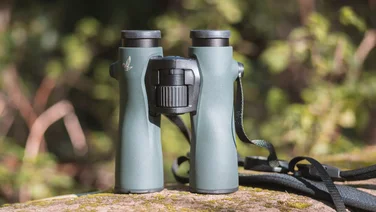To help us provide you with free impartial advice, we may earn a commission if you buy through links on our site. Learn more












A bigger zoom usually means a bulkier, pricier camera, so although the Nikon S6800’s 12x zoom is unremarkable by today’s standards, the £159 price and 141g weight add up to an attractive package. It’s reasonably handsome in the flesh, too, although the plastic case can’t match the all-metal Canon Ixus 265 HS.
There’s no orientation sensor, so portrait-shaped photos much be rotated manually. Thankfully, there aren’t any other signs of cost-cutting. The 3in screen looks reasonably sharp with its 460,000-dot resolution. There’s Wi-Fi, HDMI and 1080p video recording at 25fps, plus a 50fps 720p mode that plays back at half-speed slow motion.

There’s a mode button rather than a dial, with various scene presets available. Smart Portrait is the most interesting. It focuses when a face is detected, captures five shots when the face breaks into a smile and then selects one image to save. It’s not obvious to us what criteria the camera uses to select its favourite shot, sometimes saving a photo with the subject blinking, but it’s a fun idea. Auto mode is likely to see the most use, as it keeps things straightforward. It’s great to see a dedicated button for exposure compensation, particularly as it’s available in all shooting modes.
The Wi-Fi implementation is straightforward. There’s no NFC but it only took us a few seconds to connect to our Nexus 4 phone. The remote viewfinder mode offers control over the shutter button and zoom only, but we appreciate the switch in the app for quickly relinquishing control back to the camera – in other cameras the Wi-Fi connection must be terminated. Browsing the camera contents is fast, and transfers are at a choice of resolutions.

Our biggest concern with this camera is the time it took to switch on. Most times it took about 2.9s to power up and capture a shot, which in itself is relatively slow. However, the camera sometimes took nearer six seconds, and on a few occasions about 20s before it was ready to shoot. This was extremely frustrating when trying to capture fleeting subjects, or when getting people to pose for a shot.
Otherwise, performance was mixed, with a pedestrian 1.8s between shots but an impressive 4.3s for flash-lit photos. Continuous mode captured seven frames at 7.8fps, and was ready to go again after nine seconds.
Video quality was uninspiring, with coarse details compared to other cameras’ 1080p footage and abrupt changes to exposure levels in variable lighting conditions. There was a bit of zoom motor noise in the soundtrack, and the stabilisation struggled to keep handheld shots steady at the full zoom extension. Low-light clips were better than average, though.
IMAGE QUALITY
The S6800 was more impressive in our photo tests. Focus was sharp throughout the zoom range. Close inspection of brightly lit shots revealed slightly coarse details and a smattering of noise, but they still compared well with rival cameras’ output. The camera wasn’t so competitive in our low-light tests, though, with skin tones succumbing to noise.

^ Focus looks sharp in this wide-angle shot, but the JPEG processing has made details look a little coarse – 1/125s, f/3.3, ISO 125, 25mm (equivalent)

^ This photo fares better, with sharp focus once again and a nicely balanced exposure – 1/200s, f/4.5, ISO 125, 61mm (equivalent)

^ We can’t fault the colours here but skin textures are a little noisy on close inspection – 1/250s, f/5.3, ISO 125, 130mm (equivalent)

^ Noise is much more of a problem indoors, with spidery edges to shapes and very little detail remaining – 1/6s, f/5.1, ISO 800, 113mm (equivalent)
CONCLUSION
Ultimately, this is a decent little camera at a sensible price. It needs better image quality in low light and more reliable start-up times to warrant a recommendation, though.





